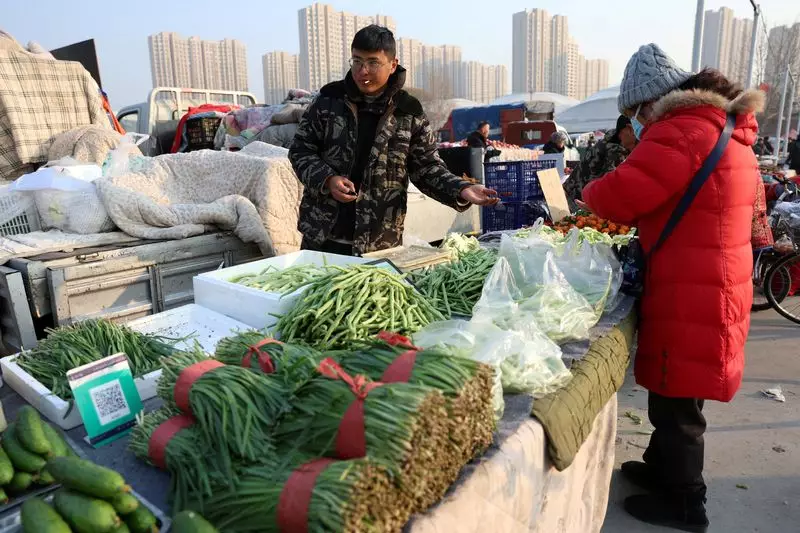In October, the consumer price index (CPI) in China demonstrated a sluggish growth trajectory, reaching an annual increase of just 0.3%, the slowest rate reported in four months. This decline is significant in the context of the broader economic landscape, where authorities are scrambling to apply stimulus measures to revive a faltering economy. A recent package approved by the National People’s Congress aims to address local government debt issues but lacks provisions for immediate monetary infusion, leaving many analysts skeptical about its potential to invigorate consumer demand or stimulate economic activity in the short term.
The revelation of these economic indicators arrived concurrently with an acknowledgment from analysts that, despite a minor uptick in core inflation, overall pricing pressures remained subdued. The core inflation rate rose to 0.2%, a slight improvement compared to September’s figure of 0.1%. Nevertheless, the continued suppression of consumer prices reflects a deepening deflationary environment, which could pose significant risks for the economy as a whole.
China’s recent legislative moves involve a staggering 10 trillion yuan (approximately $1.4 trillion) stimulus package focused primarily on alleviating “hidden debt” burdening local governments. This approach, while aimed at stabilizing an essential part of the governance infrastructure, does not translate into quick fixes for struggling consumers or businesses. The government’s decision to maintain this policy framework highlights its cautious stance. Minister of Finance Lan Foan has hinted at further measures on the horizon, particularly in tax reform to stimulate the beleaguered housing market. However, the timing and the efficacy of these policies remain uncertain.
The cautious optimism surrounding these stimulus efforts is not universally shared. Many analysts argue that the government may be withholding more aggressive fiscal measures as a strategy to preserve economic flexibility, especially with political uncertainties looming on the horizon, such as the potential re-election of Donald Trump in the U.S. next year. This approach suggests a chilling pragmatism, possibly prioritizing long-term stability over immediate relief.
Consumers in China are exhibiting a pronounced reluctance to engage in spending, a behavior largely influenced by the current state of the housing market. With a staggering 70% of household wealth invested in real estate, many families are navigating through a landscape of economic uncertainty, prompting them to prioritize saving over consumption. This behavioral shift contributes to deflation, further complicating the economic revival process.
Market analysts predict that the path ahead for consumer inflation remains bleak, with forecasts suggesting a mere 0.8% inflation rate in the upcoming year. Such projections underline the considerable likelihood of ongoing low inflation, with producer prices expected to remain in negative territory until at least the third quarter of 2025. This continuous dip in producer prices—recording a 2.9% annual drop in October—indicates a troubling trend for manufacturing sectors, particularly in pivotal areas like petroleum, chemical products, and automotive production.
Looking forward, experts contend that recent government policies aimed at counter-cyclical adjustments—despite their lack of immediate impact—could potentially revitalize consumption and investment momentum in the longer term. Zhou Maohua of China Everbright Bank posits that effective implementation of these measures could serve as a catalyst for economic recovery. However, the overarching question remains whether these initiatives will be adequate or timely enough to combat the persisting deflationary pressures that weigh heavily on both consumers and businesses alike.
China’s economy is at a critical juncture, grappling with weak inflation, deepening producer price deflation, and intricate challenges arising from consumer behavior. While the government’s efforts to alleviate local government debt may pave the way for future stabilization, the immediate impacts appear muted. As confidence wanes and spending stalls, the need for robust and effective economic policies becomes ever more pressing. The days ahead will require astute and perhaps unconventional approaches to navigate this precarious economic landscape.

